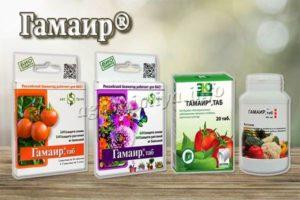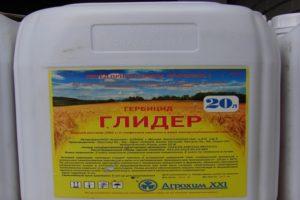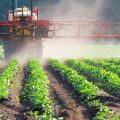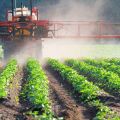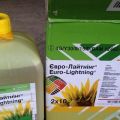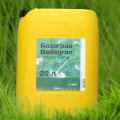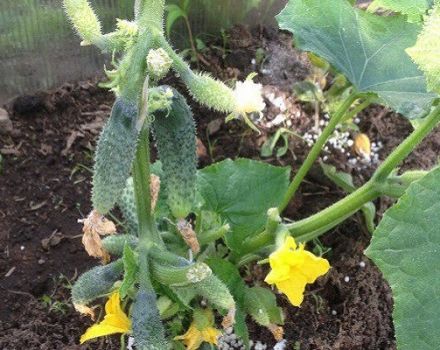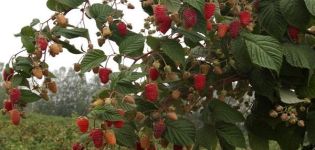Instructions for use and mechanism of action of the herbicide Aksifor
Weeds on agricultural land interfere with the full growth and development of crops. And if on private plots gardeners manage with folk remedies and remove them manually, then on an industrial scale, farmers are forced to use chemicals. "Akzifor" is one of the herbicides, which the instructions for use describe as an effective drug against weeds. Before using this chemical, study its principle of action, consumption rates and safety measures when working with the substance.
Content
- 1 Composition and formulation
- 2 Suppressed weeds
- 3 Principle of operation
- 4 The period of protective action of the herbicide "Aksifor"
- 5 Impact speed
- 6 Possibility of emergence of resistance
- 7 Possibility of crop variation in crop rotation
- 8 Main pros and cons
- 9 Weed control consumption rate
- 10 How to prepare a working solution
- 11 Instructions for using the ready-mixed mixture
- 12 Safety precautions when using herbicide
- 13 Drug toxicity
- 14 Compatibility with other substances
- 15 How to store the product correctly
- 16 Analogs
Composition and formulation
The active ingredient of the herbicide responsible for its action is oxyfluorfen. Its concentration is 240 g / l. The drug is produced by the firm "FMRus". The herbicide is produced in the form of a concentrated emulsion, packaged in 1 liter bottles and 5 liter plastic cans.
Suppressed weeds
The herbicide "Aksifor" is designed to protect onion plantings from weeds. The list of herbs against which the active substance effectively fights includes white gauze, ragweed, field bindweed, Theophrastus' cable car, ashberry, field mustard, scherch and many others.
Principle of operation
The active ingredient of the herbicide, called oxyfluorfen, penetrates the cell membranes of developing weeds and provokes their destruction. As a result, the cells are deformed and the weed tissues dry out. Seedlings dry up instantly after exposure to the drug.
The period of protective action of the herbicide "Aksifor"
The time during which the chemical protects crops from harmful grasses depends on the degree of soil contamination.
Usually, one treatment per season is sufficient.
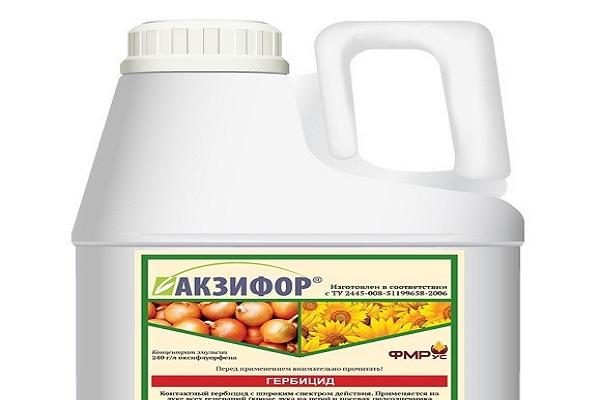
Impact speed
After 2-3 days, the first signs of damage to weeds appear, the complete destruction of the grass is observed in 1-2 weeks, depending on the degree of contamination of the site.
As for the seedlings of weeds, they die off almost instantly.
Possibility of emergence of resistance
No cases of occurrence for the entire period of use of the herbicide in agricultural practice have been identified.
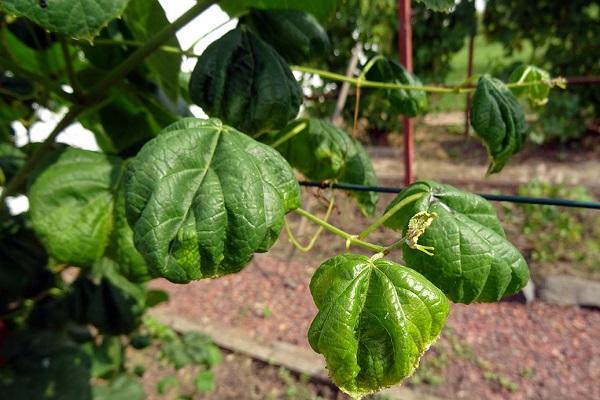
Possibility of crop variation in crop rotation
To one of the advantages of using a herbicide, farmers attribute the fact that it does not negatively affect crop rotation.
Main pros and cons
Like any chemical, the Aksifor herbicide has its advantages and disadvantages.
The main advantages of using the drug for weed control include:
- The speed of action on weeds.
- A wide range of effects on dicotyledonous and a number of monocotyledonous plants.
- Increased economic efficiency of the drug.
- Nearly 100% bioeffective in testing.
- Can be used in tank mixes with other chemicals.
- No impact on crop rotation.
The disadvantages of the chemical include the inability to use for all crops and the requirements for safety measures.

Weed control consumption rate
For processing plantings of onions and garlic, the manufacturer recommends certain dosages of the substance. Failure to comply with the proportions can lead to the death of cultural plantings and environmental pollution.
How much chemical is needed:
- Onions and garlic (except for crops per feather) - 0.5 liters. Consumption of the prepared working fluid is 200-300 liters per hectare of plantings. Spraying is carried out when the crops have formed 2 true leaves. One-time processing per season.
- Onions and garlic (except for plants intended for feathers) - 1 liter. 200-300 liters per hectare are used per hectare of crops. Processing is carried out when 3 true leaves have formed on the onion and garlic. Spraying is performed once a season.
- Sunflower - 0.8-1 liter. The soil is cultivated before the emergence of crop shoots. 200-300 liters of prepared working fluid are consumed per hectare of cultivated crops. Reprocessing of plantings is not carried out.
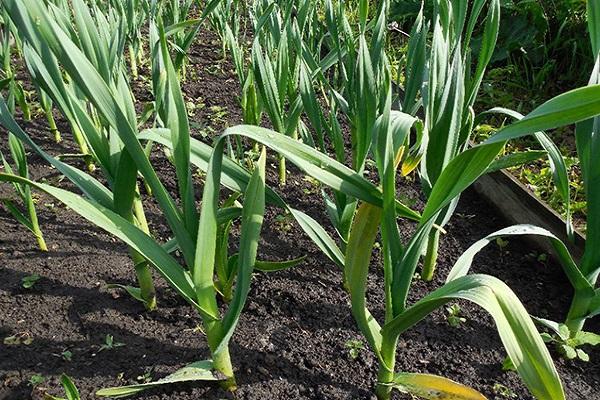
How to prepare a working solution
Before preparing the working solution, prepare all the necessary tools and clothing to protect the farmer. 1/3 of clean water is poured into a spray bottle. The recommended amount of herbicide is also added there. Mix the composition thoroughly. Then add water to the end and mix the liquid again. Composition for processing cultivated plantations is ready.
You cannot make a chemical solution in advance. The liquid should be prepared just before processing the onion and garlic beds. The solution remaining after spraying is disposed of.
In no case should the chemical be poured onto the soil or into nearby water bodies, so as not to harm the environment..

Instructions for using the ready-mixed mixture
When the working fluid is ready, they begin to process the plantings. This should be done in dry, calm weather. The use of the herbicide "Aksifor" in the rain leads to the loss of working qualities of the composition. Also, you can not use a chemical if the plant shows signs of pest and disease damage, or if the crop is damaged during return spring frosts.
If onions are grown to obtain feathers, the herbicide cannot be used, since the residues of the substance can be contained in the green parts of the plants and cause harm to human health.
Safety precautions when using herbicide
As with any chemical substance, safety requirements are adhered to when using the herbicide "Aksifor". The person who carries out the treatment must wear protective clothing, rubber gloves on his hands, and his head covered with a kerchief or any other means of protection.

The area where the chemical is prepared and used should be kept away from children and pets. You can not spray the beds for pregnant women and people who have allergic reactions.
Drug toxicity
A selective chemical, which is the herbicide "Aksifor", belongs to the 3rd hazard class.That is, it is moderately dangerous to bees, mammals and humans. If there are apiaries near the processing site, they warn the owners about the upcoming event in advance. This will exclude massive death of insects.
Compatibility with other substances
One of the main advantages of the herbicide "Aksifor" is considered its compatibility with all pesticides. It can be used in tank mixes for complex processing of cultivated plantations. It is recommended to conduct a test before use by mixing a small amount of preparations. If a precipitate appears at the bottom of the solution or another chemical reaction occurs, they refuse to use the substances together so as not to harm the plants.
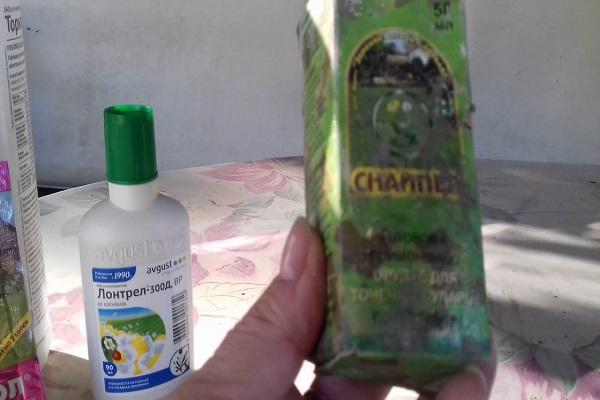
How to store the product correctly
Since the substance belongs to substances moderately hazardous to human health, they are responsible for its storage. For this, technical rooms are used, where a positive temperature and an average humidity indicator are maintained. The herbicide is stored in its original packaging, the access of children and pets is limited to the room. If after spraying the working composition remains, it is disposed of according to the manufacturer's instructions.
Analogs
If in the area where the farmer lives, it is not possible to purchase the herbicide "Aksifor", it is replaced with another chemical with the same active substance and working qualities. These drugs include "Goal" and "Galigan". They are also used to control dicotyledonous annual weeds in cultivated onion and garlic plantations. In their composition, the active ingredient is oxyfluorfen, which has proven its effectiveness in the fields of many farmers.
